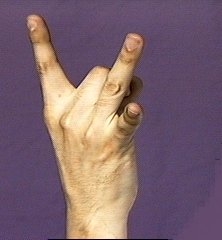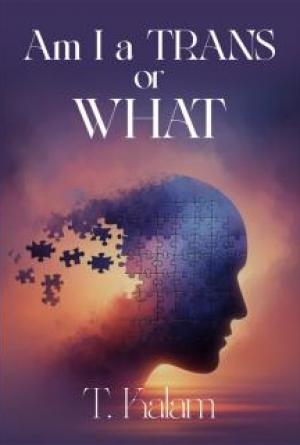

Once upon a time Deaf used to be a word people looked down upon. These people would label the Deaf with harsh terms, such as
“Deaf and Dumb” and the “hearing impaired”. Now with its ever growing culture, more hearing individuals have grown to accept, love and even be a part of this fascinating world in their own way. Deaf individuals whom are a part of Deaf culture are not disabled. These individuals are humans just like everyone else. They eat, breath, sleep, hurt and communicate with each other efficiently. Deaf people, as humans, differ in only one aspect. The hearing can hear and the Deaf live their life in silence. However, when it comes to Deaf culture the world of the hearing and the Deaf could not be more different. Yet, some people are ignorant to the differences between these two cultures, and because of their innocent ignorance audism rears its ugly head. Throughout this short piece I hope to give some insight to the ignorant and explain audism, give a brief overview of Deaf culture based on my teachings and experiences and present a stepping stone so one may begin their journey to learn American Sign Language and more on Deaf culture through various sources such as dictionaries, websites and young adult literature.
A significant amount of discrimination the Deaf are exposed to is due to ignorance of their culture. Humanity in general is terrified of what they do not know. Therefore, they shun these things, or people, 1

they have no knowledge of. Audism is a complex term used within Deaf culture to illustrate hearing individuals whom discriminate the Deaf due to ignorance or hatred towards the Deaf's choices. Audism is taken from the Latin term audire, which means to hear, and -ism, which is a system of practice, condition of, behavior, belief or attitude towards something. Audism can also be defined as a belief in which the hearing are superior to the Deaf and have a better quality of life due to their ability to hear the world around them. Even though audism mainly refers to hearing individuals, this term can also stretch out and blanket what is referred to as Codas or little d deaf people.
Codas are imbedded within Deaf culture due to their parents who one or both are Deaf. Codas themselves are hearing, and most embrace their Deaf heritage along with the culture of the hearing.
However, in some cases Codas do not accept their Deaf culture and resent their parents for not wanting to fix what they see as a problem, therefore practicing audism. However, with most of these cases their acts of audism is not due to ignorance. This expression of audism is usually due to spite. Little d deaf individuals are people who are deaf, but choose not to be a part of Deaf culture. In many cases the want to be hearing is because of the lack of knowledge of the Deaf world due to many possible factors, such as hearing parents who want a hearing child, little to no interaction with other deaf individuals, especially 2
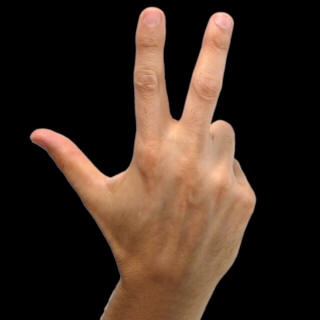
those involved in Deaf culture, and the list can continue endlessly.
However, some little d deaf do know and understand deaf culture and simply choose not to be a part of it. This decision is their own and there is nothing wrong with that.
There are different forms of audism that are expressed by people the Deaf have deemed audists. Some audists believe the Deaf cannot perform certain tasks or jobs due to their Deafness. It is true that the Deaf are incapable of performing certain jobs in which require superb oral and vocally receptive skil s, but in most cases jobs can be done by the Deaf when the hearing see them as incapable. Many companies can make alterations to certain positions so the Deaf can do the job adequately. During most of these cases the situation turns out to be even better to the company, their employees and other counterparts. Another form of audism can take the shape of discrimination against the Deaf's largest cultural aspect: their language. During the eighteenth and most of the nineteenth century ASL was banned or severely discriminated against within school systems and public use. Many students were punished if seen using ASL. Even today within some areas of the world Sign Language is shunned, banned and hated by the the hearing. These individuals do not see ASL or any other form of Sign Language, such as British Sign Language or French Sign Language, as a language at all.
3
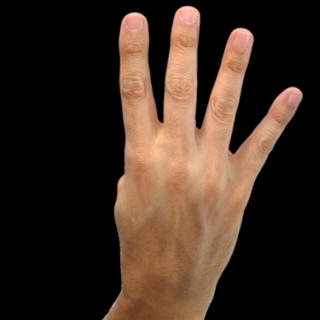
There are two main categories people can fall under regarding audism: passive audism and active audism. Those who practice passive audism are the people I am attempting to educate on Deaf culture. These individuals are ignorant to aspects if not the entirety of Deaf culture and commit these acts of audism due to their innocent lack of knowledge. Active audism is the reverse. These people discriminate against the Deaf being fully knowledgeable and properly educated in Deaf culture. They still feel superior to the Deaf while they look down on and shun them. There are many ways to commit acts of audism as with any culture. What I have shown here is just a small snapshot of what could be committed.
Some people find it difficult to think of being Deaf as a culture all its own. First, I believe it is important to define what culture is. I have always been taught that culture is values, traditions, norms, customs, arts, history, folklore and institutions a group of people share who are unified by race, ethnicity, language, nationality or religion. The Deaf have their own language social groups, athletic clubs, theater companies, university, magazines, television programs and Olympics.
In a sense the Deaf have created their own small world, therefore resulting in their own culture. They have created solutions to what the hearing refer to as true problems through a system of flashing lights or vibrations. For instance, those who do not understand Deaf culture 4
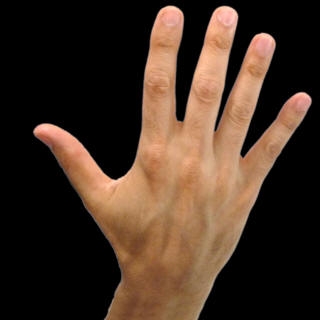
ask questions such as: how do the Deaf know when someone is knocking on the door or ringing the door bell, how do they know if the phone rings or when their baby cries? Most Deaf people install sensors that show the ringing of the door bell, phone and their baby's cry through a series of flashing lights. For example, if the door bell rings certain lamps, which are visible from most rooms in the house, may flicker rapidly to signal the Deaf individual that someone is at the door, while all the lights flicker slowly if their baby is crying and certain lamps flash slowly when they are receiving a phone call through video relay where an interpreter or a member of the Deaf community will sign to them through their television screen and then they will sign back. Some cell phones, such as the iPhone 4s, have features similar to video relay called facetime. These phones also have settings to create a rapid LED flash when receiving texts, phone calls, emails and other notifications. The same system can be used for fire alarms, smoke detectors and alarm clocks among many others. Alarm clocks can not only be programed to trigger the lights to flash, but also initiate the bed to start vibrating to awake the Deaf individual if the flashing lights fail to wake them up. Therefore if you find yourself in a Deaf person's home do not be alarmed when the lights begin to flash or flicker.
A few other aspects that are important to understand before 5
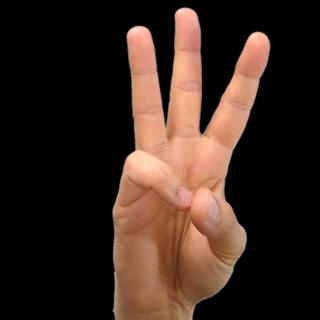
throwing yourself into Deaf culture are simple matters of Deaf etiquette. One of the most important aspects of Deaf culture is eye contact. American Sign Language (ASL), the American language of the Deaf, depends strongly on facial expressions. If one breaks eye contact with a Deaf individual they see this as breaking off the conversation. In the world of the hearing it would be the equivalent of getting up and walking out of the room in the middle of a conversation.
However, there is one exception to this rule. If one is in the process of learning ASL and to fully understand what the signer is expressing the receiver of the sign must look to the signers hands to catch more complicated signs, such as fingerspelling, this is acceptable, but as much eye contact as possible should be done.
To begin a signed conversation with a Deaf person there are certain ways to get their attention without being rude. For example, throwing an object in the Deaf's direction is not the appropriate way to gain their attention. If the person one is attempting to gain the attention of is across the room there are a few ways to go about it.
One of those ways is to get the attention of a person close to the individual one wishes to have a conversation with, and request they get the person's attention and inform them of whom the person is that wishes to converse with them. When requesting another Deaf individual to get the attention of someone, it is important not just to 6

point at the person whom one requires attention from, but to also describe distinct features that will help them know who is being referred to. Another way to get a person's attention from across the room is to simply wait patiently until that person looks in the direction of the person who is trying to get their attention. This may take a while, but eventually they will look in the direction of the one who is seeking their attention so a conversation can be held or one can just walk over if for some reason they do not look in that direction. If one is close to a light switch or lamp the Deaf individual can see in their peripheral vision, the individual can flash the lights to get their attention as well. Flashing the lights within a crowded room can also gain the attention of larger groups, such as students in a classroom or colleagues in meeting areas. When a person is sitting or standing close by to gain their attention it is as simple as extending your arm in their direction and giving them a small wave of the hand. If one is behind the Deaf individual a light tap on the shoulder is sufficient to gain their attention.
However, other different scenarios require different methods to get the others attention. For example, if one is driving with a Deaf passenger and the driver wishes to inform the Deaf individual of something while driving it is dangerous for the driver to look away from the road to find their shoulder to give them a gentle tap. If the 7
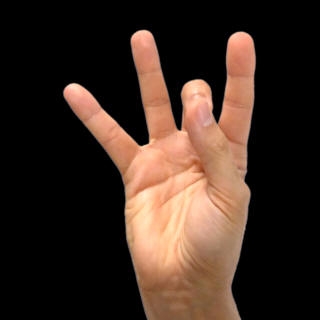
driver tries to guess where the passenger's shoulder is it can become inappropriate very quickly. By waving to gain their attention the situation can turn into a slap to the face for the passenger. The appropriate way to gain the attention of the Deaf passenger is to gently tap on the persons knee by lowering the hand near the dashboard. If one was to tap the side of their leg this would be appropriate as well. This way, within Deaf culture, one does not risk the chance of harming or offending their passenger. Another example could be made during a meal with a Deaf individual. Upon returning from a short absence with any kind of food or beverage it is important that these items are not dropped. First before jumping into this scenario it is important to understand that when Deaf people interact their sign, especially when greeting each other, most of the time is very enthusiastic. They will throw up their hand and wave or do a
“salute” type motion to greet their friend or family member. Knowing this, if one is to return shortly with an unexpected or even expected hand full of food or some drink it is important to notify an unaware Deaf individual of the situation and your location. When coming up behind them or if they are looking in the other direction it is best to gently touch them on the elbow to signal them not to make any large movement so they may not knock whatever the other person is carrying out of their hand. Deaf culture has many tips and tricks for 8
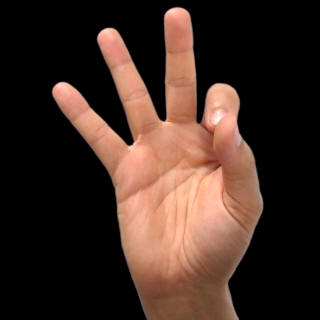
every kind of scenario.
There are many differences and similarities between the
American world of the hearing and Deaf Culture. Just as the hearing do not like people to eavesdrop on their personal conversations neither do the Deaf. It is rude to watch a Deaf conversation, especially when one can comprehend what they are signing.
However, the Deaf understand that sometimes it is hard to look away just because of the curiosity prominent in human nature. In these cases it is important to introduce oneself to those engaged in a Deaf conversation so the signers are aware of those who are capable of understanding what is being signed between them and can sensor their conversation of personal detail or move to another, more secluded, area. One difference found between these two culture is the fact that within hearing culture it is rude to point at an individual whom one is discussing, but in Deaf culture it is perfectly acceptable and in most cases necessary for clarity purposes so the person the Deaf is conversing with is able to identify the person they are referring to.
The Deaf are also known for being very blunt and informative.
Within hearing culture it is considered rude to discuss certain personal information, especially to those in which you just met. There are also 9

somethings deemed unnecessary information to the world of the hearing, that is a must within Deaf culture. For example, within Deaf culture it is okay to discuss things the hearing would see as being too personal, such as being sick and having diarrhea or even revealing the color of the stool. Within Deaf culture such detail is perfectly acceptable. Within the hearing world if someone began telling a listener they met last week about green diarrhea the individual had all day yesterday, the receiver of this information would be mortified by the detail the other person shared. In Deaf culture it is the opposite.
They want to know such detail so they may better understand the situation. With the Deaf it is all about the amount of information they can receive. The more information the better. For instance, if a Deaf person is going to leave a room to take care of something in another room it is considered rude for that person to just get up and walk out, while in hearing culture it is acceptable. The Deaf cannot hear a person leave a room so it is important to them for the person that is leaving to tell at least one person, if in a crowd, where they are going so all may be informed of what is happening around them. The hearing culture would see this as unnecessary information while the Deaf feel it is entirely necessary. Another difference is found in the fact that the hearing see it as rude to walk in between two people who are having a conversation without saying “excuse me” or “sorry”. In 10
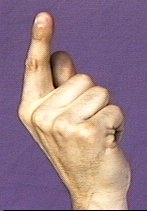

Deaf culture it is perfectly acceptable if there is no other way to get around them. It is rude to do anything that would interrupt the conversation, such as apologize, run between them, duck down under the signers hands, crawl, just stand there and wait or anything else that would be distracting.
Another rudeness found in Deaf culture regards the “label” the hearing place on Deaf people. Though it is obvious why some names are inappropriate, such as deaf and dumb, others may not be that easy to spot due to its excessive use in law, legal or medical documentation. The prime example of this is the term hearing impaired. The Deaf do not like this condescending expression because it is just that: condescending. Hearing impaired can be defined as the lack of hearing. Even though it is true that the Deaf can not hear they do not feel it is appropriate to describe them as lacking an aspect society seems to accept as the norm. Deaf do not feel like they “lack” anything and this is what this term implies. When referring to the Deaf it is best to refer to them as the Deaf, which is what they are.
One of the biggest and most well known aspects of Deaf culture is their language: American Sign Language (ASL). ASL is becoming more and more accepted as a foreign language throughout the world.
Many colleges and high schools are beginning to teach this language 11
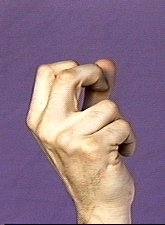
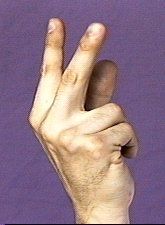
just as you would teach Spanish or French to interested students.
ASL has been proven as a language due to it's grammatical
expressions and complexity of syntax. It is a visual and very detail oriented language. Grammar is expressed mostly through facial expressions or by the forcefulness of the sign itself instead of tone as in hearing culture. Examples range from yes or no questions signaled grammatically by the raising of one's eyebrows, to “wh-” questions that are searching for a response signaled by the lowering of the eyebrows. If someone is mad about a situation they may signify this by quicker or sharper movements in their hand motions creating the sign. While in a situation to illustrate a calming situation more flowing movements may take place. The syntax is different in many ways.
ASL is not just signed English. This language is known as Signed Exact English (SEE). For example, if I lost my keys and asked someone where they were in SEE the sentence would be formatted as follows: “Where are my keys?” as compared to ASL which would be signed word for word as follows: “Key where?” which is, as one can see, very different than spoken English or SEE.
American Sign Language is not the universal sign for the Deaf. It is the form of Sign Language used by the Deaf in America. There are other forms of Sign Language used around the world. British Sign Language used by the United Kingdom and French Sign Language 12
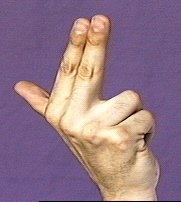
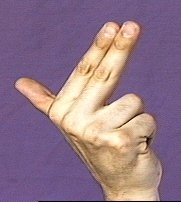
used by the French are a couple of examples. For almost every spoken language there is a language that has been developed in Sign Language. Within these languages, depending on which part of the area you are from, the signs can differ also. For example, most people who live inland in areas such as Kentucky sign the word
“beach” by fingerspelling “B-E-A-C-H” while people who live on or near coastlines sign something different that is quicker to sign because of it's frequent use. Just as in the English language, people have different names for different objects depending on region, like
“cart” or “buggy” as words used to describe the baskets on wheels used in grocery stores to put your items in. People also have different
“dialects” within sign language. Signers will emphasize different aspects of the sign. For instance, African Americans whom use Ebonics called African American Vernacular would say the word “girl” differently than someone from Appalachia would say the same word.
ASL abides by relatively the same concept. An African American would sign “girl” with more motion or forcefulness, while someone from Appalachia may sign the word in a more relaxed way.
Just as the English Language has changed over time so has
ASL. New terms have replaced old ones and slang as immersed in Deaf Culture. As can be seen in the English language pronunciation, spelling and slang have all come to pass. The English language is 13
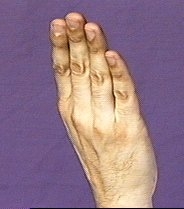
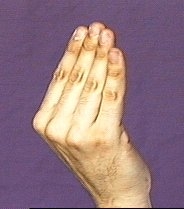
constantly changing and ASL may not change as often, but those changes, as in any other language, stil occur. Another large aspect of ASL is what the Deaf refer to as “home sign”. This form of Sign Language is usually just between families and not universal at all.
These people have tweaked the language for ease of use for their family due to reasons, such as frequency of use. Home sign is not strict ASL, but they do have ASL components. A family who grows up with home sign may not be fluent in ASL. Home sign and ASL can become two different languages the Deaf use within the same culture.
A huge part of Deaf culture ASL expresses is Deaf poetry,
literature and the Deaf's stories about other Deaf people. All these forms of expression are usually told using ASL, but some of these amazing stories can be found within the pages of a book. For some teens young adult literature can be a wonderful outlet from their stressful lives. Before I give the stepping stones necessary to be immersed in Deaf culture I would like to give you a list of books. This literature may not just give you more of an insight into Deaf Culture, but also give you insight into the world of Deaf young adult literature.
Here is a small list I was able to compile:
Burn Down the Ground: A Memoir by Kambri Crews
The Dark Days of Hamburger Halpin by Josh Berk
14
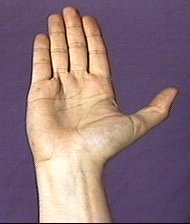
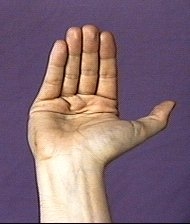
Secret Signs by T.J. Waters
8 Ways to be Deaf by Adrean Clark
Ricky's Adventures by Ricky S. Decker
The Sign for Drowning by Rachel Stolzman
Between, Georgia by Joshilyn Jackson
Some of these books may contain the supernatural or other ways to draw in a teens attention, simple language, and understandable teen issues as does any young adult literature, but these books also pack meaningful knowledge of Deaf culture. These books il ustrate how Deaf culture interacts with the world of the hearing, how the Deaf make it in a hearing world and illustrates differences and similarities between cultures. These books may help one put oneself in the shoes of the Deaf, but nothing will help an individual to understand Deaf culture more than rising to the challenge to become a part of it.
The first step is to learn ASL. It is important not to feel overwhelmed. Just as learning any language it will be difficult and confusing until the learner becomes fluent. As il ustrated earlier, ASL
is a complex language filled with aspects of grammar and syntax. To learn this language one must start with the basics. Starting off one must dedicate time to learn the alphabet. Most proper nouns are fingerspelled. Deaf culture will give what is called a quick sign to an 15
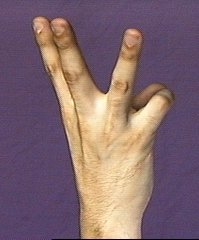
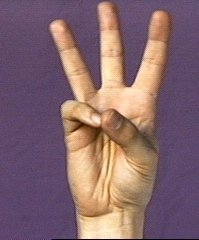
individual once that individual becomes a part of the culture. A quick sign is a faster sign that signifies names. My quick sign is the sign for
“T” while forming the sign for teacher instead of the proper hand shape, because I wish to teach ASL at a public school or English at a School for the Deaf. It takes much practice to master fingerspelling.
Do not feel discouraged. Just like all good things it will come in time.
After becoming proficient at fingerspelling the learner can move on to learn vocabulary. It is important to buy a good ASL dictionary.
The best dictionary I have found to start off with is A Basic Course in American Sign Language by Humphries Padden and O'Rourke. Other resources I have come across in my education in ASL are two very helpful websites. The first site offers five free classes in ASL, a basic ASL dictionary that is fairly accurate, the alphabet chart, a brief oversight of Deaf history and careers available in the field of ASL such as interpreting. The website is called Start American Sign Language at the URL www.start-american-sign-language.com. Another website I discovered on my journey through Deaf culture is a website made by Dr. Bil Vicars, a leading man in the Deaf community. On his website one is able to find exercises and dril s to help with expressive and receptive skil s, along with ASL dictionaries and grammatical aspects of ASL. This site is found at the URL www.lifeprint.com. Both these sites will help someone who is beginning to learn sign language and 16
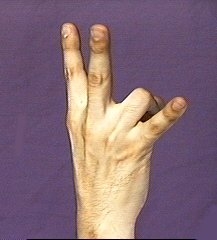
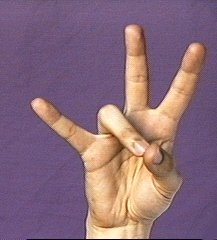
even assist those, such as me, who have been studying ASL and Deaf culture for years to refine and grow on what they have already learned.
The next step to becoming a part of Deaf culture is to learn their culture as much as possible and be respectful. Know what an act of audism is and never commit one. Think of them like you would think of anybody else, because they are just like anybody else. They simply share another culture. The last step to becoming a part of Deaf culture is to go out and meet other Deaf people. Do not be afraid to talk to a Deaf person, even if you are not fluent in ASL or completely knowledgeable of their culture. The Deaf will be happy to know an individual is putting forth the effort to learn their language and their culture that they will not care if that individual does everything according to the way it should be. If they correct a signer it is acceptable. They are simply trying to help. It is not meant to be offensive or annoying. If they see effort is being made then they want to help the progress along the best they can.
Deaf culture can be a strange and difficult culture to understand as is any new culture being introduced. The most important thing to remember is to be patient and not get discouraged because the information is not being understood fast or easy enough. Within this ebook I have il ustrated what audism is so the learner can be aware of 17
